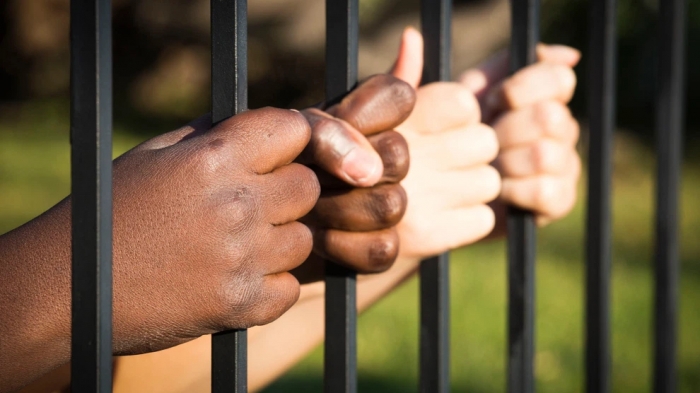
Starting in July, California’s youth prisons will no longer be accepting new inmates, with a few exceptions. The state is moving most of the estimated 750 children it currently houses in its three remaining detention centers to rehabilitation facilities.
In California, the percentage of Black youth among incarcerated juveniles in California is nearly six times the percentage of African American children in the state. Children serving time in juvenile prisons are 30% Black and about 60% Latino even though African Americans account for nearly 6 % of California’s total population of about 40 million people. Latinos make up about 39 %
Once the state shuts down the juvenile prisons it currently operates, youth convicted of violating California law will be subject to the local county rehabilitation rules that will be set up in the jurisdiction where the young person commits the crime. The newly formed California Office of Youth and Community Restoration is sending hundreds of millions of dollars in grants to the state’s 58 counties to fund the creation of the programs that are replacing youth detention centers.
“We have learned a great deal about what youth rehabilitation may truly look like; this includes trauma informed programming, mental health resources, ways to address issues like substance abuse, de-escalation, stronger academic supports, family counseling, and so on,” Assemblymember Mike Gipson (D-Carson) told California Black Media.
“This approach is a reimagining of care needed to eliminate the school-to-prison pipeline,” continued Gipson, who is chair of the Assembly Democratic Caucus and represents a district that covers parts of Los Angeles County, including Compton, Dominguez Hills, Watts and sections of Long Beach.
California’s current push decarerate youth was preceded by widespread calls for criminal justice reform in the state and several pieces of corresponding legislation proposed by several lawmakers. California Legislative Black Caucus members Sen. Steven Bradford (D-Inglewood), Assemblymember Kevin McCarty (D-Sacramento) and Gipson were among the legislators who championed the reforms.
Gov. Newsom signed the bills into law last year.
“We heard those calls for action loud and clear and today are advancing reforms to improve policing practices by ending the carotid hold and requiring independent investigations in officer-involved shootings,” Newsom said in September of 2020 as he signed the bills. The carotid hold is a maneuver that restricts blood flow to the brain, causing a victim to become unconscious or even die.
Newsom also made it a point to mention that stakeholders on all sides of the youth imprisonment problem are involved in rethinking what juvenile justice should look like in California.
“Working with our youth, faith and community leaders, law enforcement, the legislature and countless others demanding change, my Administration remains committed to the important work ahead to make our criminal and juvenile justice systems fairer and safer for all Californians,” Newsom said.
Jamilia Land is a Sacramento resident, member of the Abolish Slavery National Network (ASNN) and founder of A.S.A.P., an organization focused on assisting children who have run-ins with the criminal justice system. She described the minors she encounters through her program’s outreach.
“The majority of the youth that we work with come from lower income, impoverished communities,” Land said. “Oftentimes, these youths have experienced being in foster care, being raised by a third-party adult — not a biological mother or father. A lot of these children are being raised by extended family.”
Land says youth imprisonment is not a coincidence or unfortunate consequence, but an essential function built into the structure of a flawed juvenile justice system.
“It was designed to incarcerate anyone who’s impoverished or of color in this country. We often hear that the system is broken, it’s not. It’s doing exactly what it was meant to do,” Land said.
Over the years, many California-based organizations have worked to remedy the problem of youth incarceration. One of them is the Ella Baker Center for Human Rights. The national organization, headquartered in Oakland, celebrated the state’s decision to replace juvenile prisons with rehab centers.
“Since 2001, the Ella Baker Center has highlighted the abuses of the Division of Juvenile Justice (DJJ) to young people and their communities through the Books Not Bars campaign which successfully fought to close five of the eight California youth prisons, resulting in an 85% reduction in the youth prison population,” reads the organization’s website.
Gipson was sure to note the importance of organizations like the Ella Baker Center.
“The value of grassroots initiatives and organizations often behind them is critical from an effective advocacy lens gathering interests of our communities,” Gipson stated. “Those who practice in these spaces are boots on the ground and play a key role as change agents when change is needed.”
But however historic and radical this change might seem to many, youth advocates like Land remain cautious. She says “half measures” may not be enough to solve deeply entrenched problems.
“There is no redesigning the system. There is deconstructing it and reconstructing components that actually promote safety and overall community wealth,” warns Land. “The prison industrial complex is now being reshaped and refashioned to look like rehabilitation. Don’t be deceived, it is still the same thing.”
Gipson, on the other hand, remains optimistic about the future of the juvenile justice system.
“Yes, of course I am optimistic moving these youth out of the Department of Corrections and Rehabilitation (CDCR) and into the Department of Health Care Services (DHCS) and the Department of Social Service (DSS) because they will have a better understanding of what Justice Involved Youth need. They will be able to provide them with a more well-rounded approach to focus on rehabilitation and less on punishment,” Gipson said.



